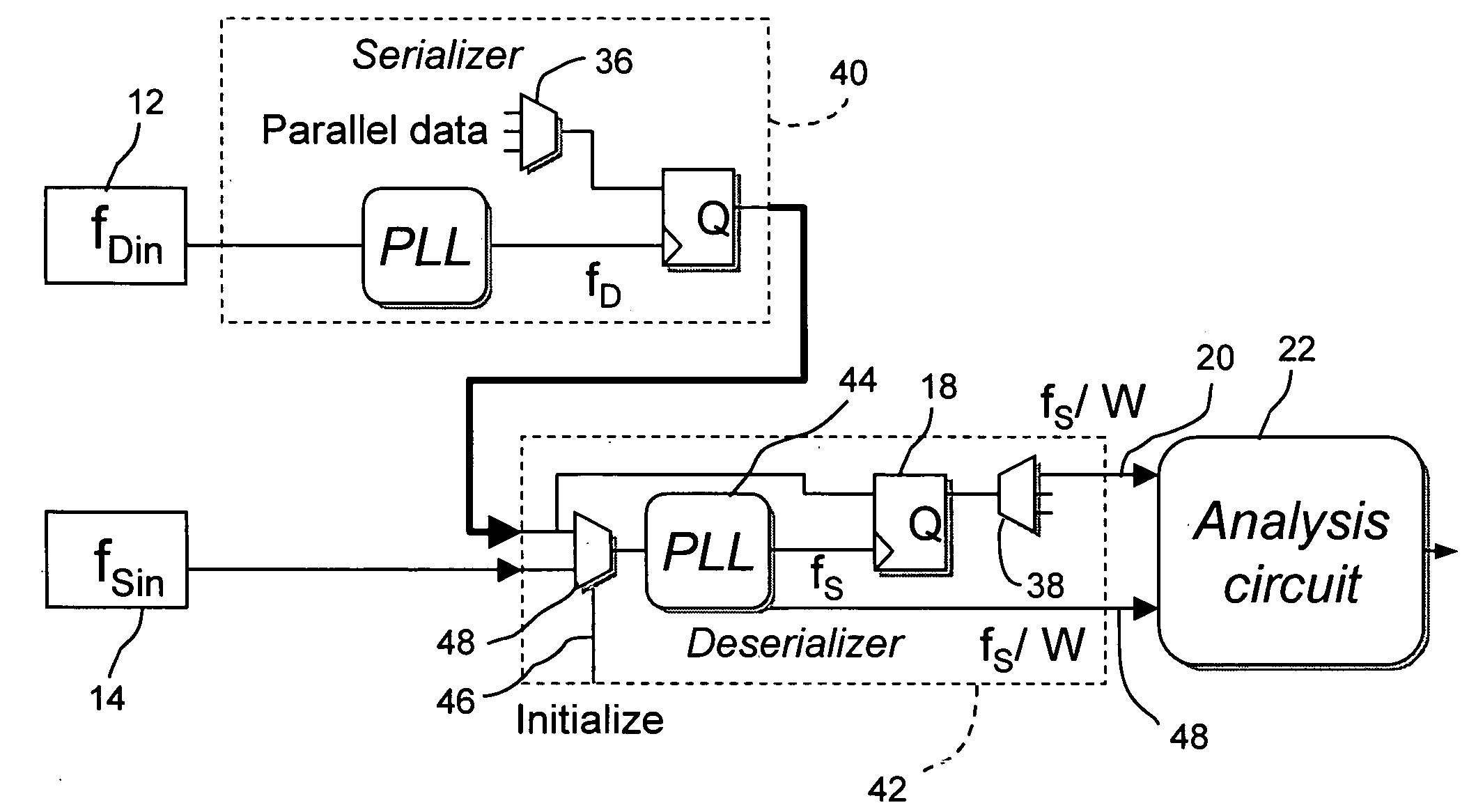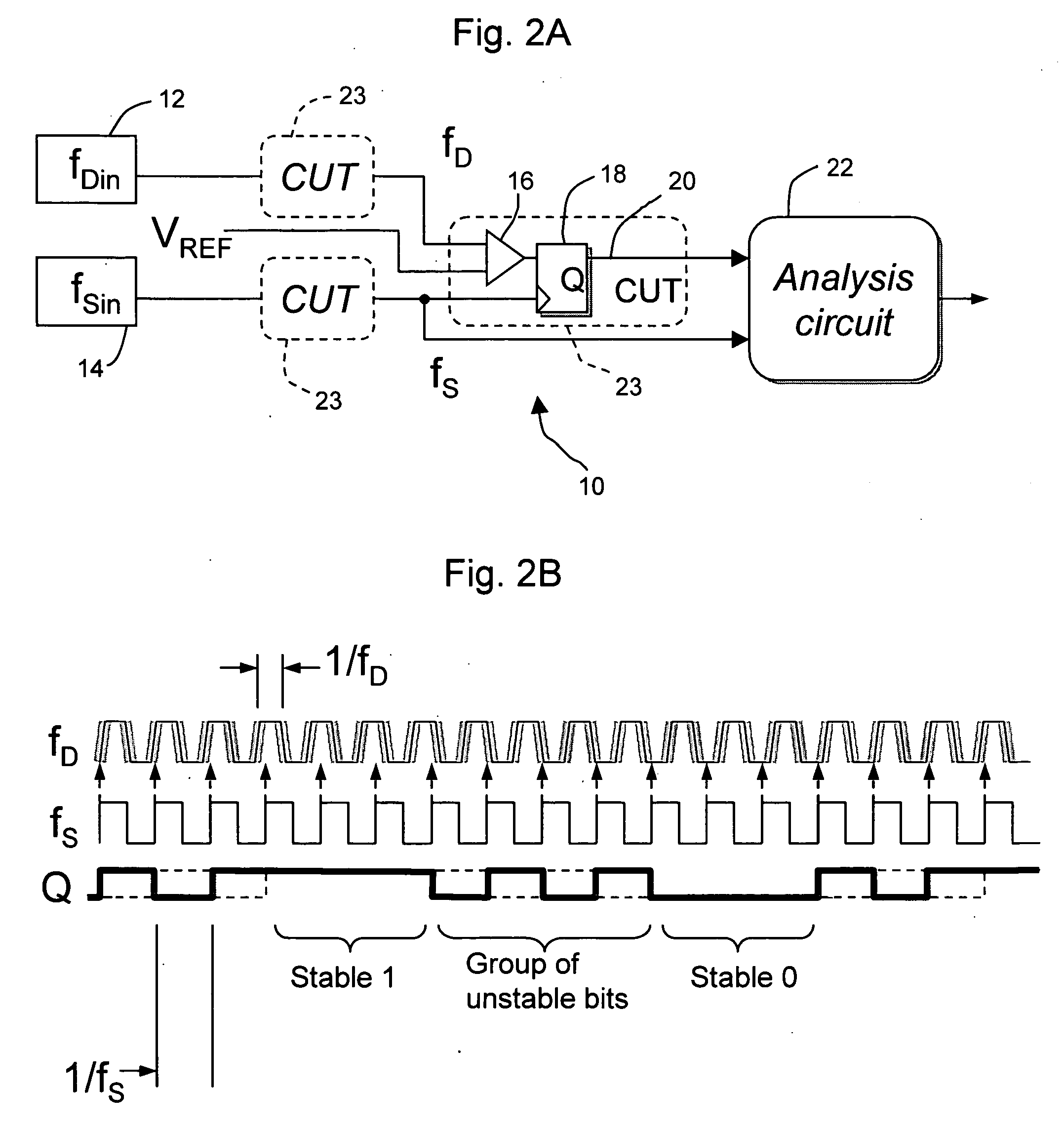Circuit and method for measuring jitter of high speed signals
a high-speed signal and circuit technology, applied in the direction of noise figure or signal-to-noise ratio measurement, instruments, transmission monitoring, etc., can solve the problems of complex and expensive testing, impractical testing, and difficult to accurately measure the timing parameters of circuit signals, so as to achieve accurate measurement of jitter using circuitry, minimal or no impact on the signal under test, and low cost
- Summary
- Abstract
- Description
- Claims
- Application Information
AI Technical Summary
Benefits of technology
Problems solved by technology
Method used
Image
Examples
Embodiment Construction
In the following detailed description, numerous specific details are set forth in order to provide a thorough understanding of the present invention. However, it will be understood by those skilled in the art that the present invention may be practiced without these specific details. In other instances, well known methods, procedures, components and circuits have not been described in detail so as not to obscure aspects of the present invention.
An objective of the invention is to test jitter of signal waveforms, relative to predetermined test limits, to determine whether circuitry is free of manufacturing defects. A further objective is to measure the performance of circuitry for purposes of characterization or design validation.
An embodiment of circuit 10 of the present invention is shown in FIG. 2A. The circuit comprises a data clock generator 12 which generates a data signal having a frequency or data rate, fDin, a sampling clock generator 14 which generates a data signal ha...
PUM
 Login to View More
Login to View More Abstract
Description
Claims
Application Information
 Login to View More
Login to View More - R&D
- Intellectual Property
- Life Sciences
- Materials
- Tech Scout
- Unparalleled Data Quality
- Higher Quality Content
- 60% Fewer Hallucinations
Browse by: Latest US Patents, China's latest patents, Technical Efficacy Thesaurus, Application Domain, Technology Topic, Popular Technical Reports.
© 2025 PatSnap. All rights reserved.Legal|Privacy policy|Modern Slavery Act Transparency Statement|Sitemap|About US| Contact US: help@patsnap.com



